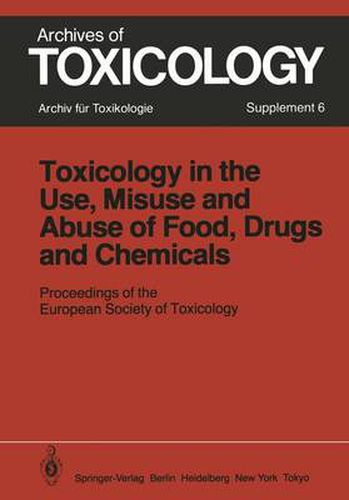Readings Newsletter
Become a Readings Member to make your shopping experience even easier.
Sign in or sign up for free!
You’re not far away from qualifying for FREE standard shipping within Australia
You’ve qualified for FREE standard shipping within Australia
The cart is loading…






This title is printed to order. This book may have been self-published. If so, we cannot guarantee the quality of the content. In the main most books will have gone through the editing process however some may not. We therefore suggest that you be aware of this before ordering this book. If in doubt check either the author or publisher’s details as we are unable to accept any returns unless they are faulty. Please contact us if you have any questions.
Many chemotherapeutic agents introduced for use in humans are carcinogenic in laboratory animals (Conklin et al. 1965; Shimkin et al. 1966; Griswold et al. 1968; Harris 1976). However, initially their beneficial effect in disseminated cancer was of such short duration that the inevitable death of the patient from his primary disease precluded any clinical manifestation of the carcinogenic potential. During the last decade, chemotherapy has radically changed the outlook for many patients with cancer. Combinations of drugs, administered as the primary treatment, have resulted in high rates of cure in patients with disseminated malignancies, such as stage IV Hodgkin’s disease or childhood acute lymphocytic leukemia. In other disseminated forms of neoplasia, induction of a remission, a substantial palliation and a prolongation of survival have been achieved. In many instances of localised disease, where surgery with or without radiotherapy are the primary form of treatment, anticancer drugs have been used with success as adjuvant therapy for distant microscopic disease. With these spectacular achievements, secondary malignancies, in particular acute non-lymphocytic leukemia (ANLL), has become of major concern. Incidence Acute leukemia is the most frequent form of secondary neoplasia in patients treated for cancer (Penn 1981). In one large series, 5. 9% of all ANLL could be attributed to previous chemotherapy (Kapadia et al. 1980).
$9.00 standard shipping within Australia
FREE standard shipping within Australia for orders over $100.00
Express & International shipping calculated at checkout
This title is printed to order. This book may have been self-published. If so, we cannot guarantee the quality of the content. In the main most books will have gone through the editing process however some may not. We therefore suggest that you be aware of this before ordering this book. If in doubt check either the author or publisher’s details as we are unable to accept any returns unless they are faulty. Please contact us if you have any questions.
Many chemotherapeutic agents introduced for use in humans are carcinogenic in laboratory animals (Conklin et al. 1965; Shimkin et al. 1966; Griswold et al. 1968; Harris 1976). However, initially their beneficial effect in disseminated cancer was of such short duration that the inevitable death of the patient from his primary disease precluded any clinical manifestation of the carcinogenic potential. During the last decade, chemotherapy has radically changed the outlook for many patients with cancer. Combinations of drugs, administered as the primary treatment, have resulted in high rates of cure in patients with disseminated malignancies, such as stage IV Hodgkin’s disease or childhood acute lymphocytic leukemia. In other disseminated forms of neoplasia, induction of a remission, a substantial palliation and a prolongation of survival have been achieved. In many instances of localised disease, where surgery with or without radiotherapy are the primary form of treatment, anticancer drugs have been used with success as adjuvant therapy for distant microscopic disease. With these spectacular achievements, secondary malignancies, in particular acute non-lymphocytic leukemia (ANLL), has become of major concern. Incidence Acute leukemia is the most frequent form of secondary neoplasia in patients treated for cancer (Penn 1981). In one large series, 5. 9% of all ANLL could be attributed to previous chemotherapy (Kapadia et al. 1980).